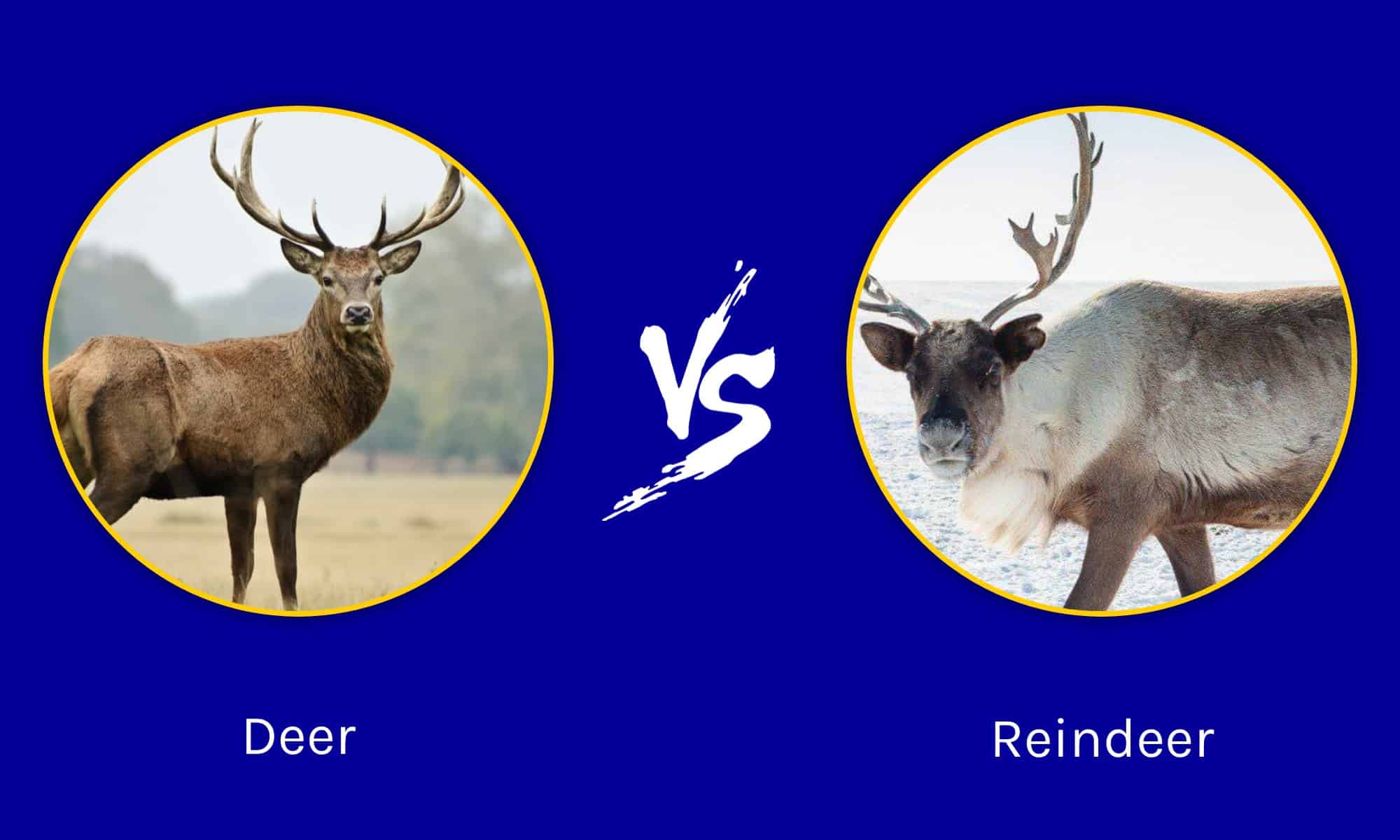While someone who doesn’t know anything about animals might confuse them, reindeer and deer are two different animals. Though they belong to the same family, confusingly called “deer,” many different subspecies and groups are included in it. In this article, we’ll cover the main differences between reindeer (or caribou) and whitetail deer and explain to you what makes each unique.
Comparing Whitetail Deer and Reindeer
| Whitetail Deer | Reindeer | |
|---|---|---|
| Classification | Species: Odocoileus virginianus | Species: Rangifer tarandus |
| Native to | The Americas | The Arctic, subarctic, tundra |
| Fur | Light fur, color varying by species | Dense fur, color varying by habitat |
| Food | Grass, mushrooms, shrubs, leaves, small twigs, fruit, lichen | Mainly lichen, but also fish, bird eggs, grass, mushrooms |
| Antlers | Only males, about 6 gr per kg of body mass | Both males and females |
| Hooves | Smaller and constant | Bigger, adapting to seasonal changes |
| Migration | Doesn’t migrate | Up to 3000 miles a year |
Reindeer vs. Whitetail Deer: Classification
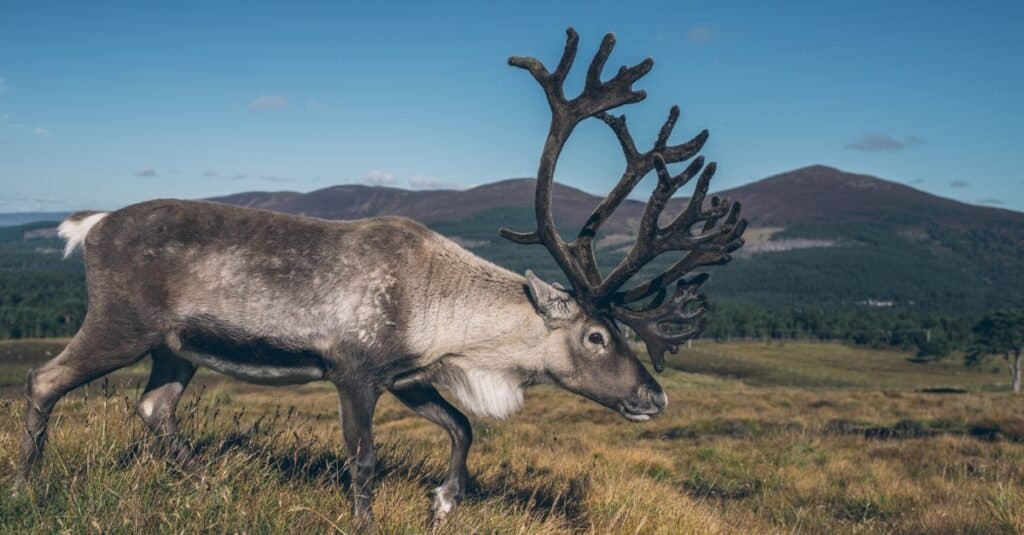
While they belong to the same family, reindeer and whitetail deer are two different species. Pictured here is a reindeer, or caribou, another name for the same species.
©doliux/Shutterstock.com
Reindeer and whitetail deer belong to the same family of animals called Cervidae. It includes all major species of deer, dividing them into two principal groups. First, the Cervinae, which includes muntjacs, red deer, elks, and fallow deer. Then, the Capreolinae, which includes caribou deer (reindeer), whitetail deer, roe deer, and moose.
As such, they are two different species within the same subfamily. Whitetail deer are called Odocoileus virginianus because of their strong presence in the state of Virginia. Caribou are called Rangifer tarandus but are mostly referred to as caribou or reindeer. Caribou, in this case, comes from the Miꞌkmaq language of the northern peoples of Canada and means “snow shoveler.”
There are 14 subspecies of reindeer and 26 different subspecies of whitetail deer.
Reindeer vs. Whitetail Deer: Origin
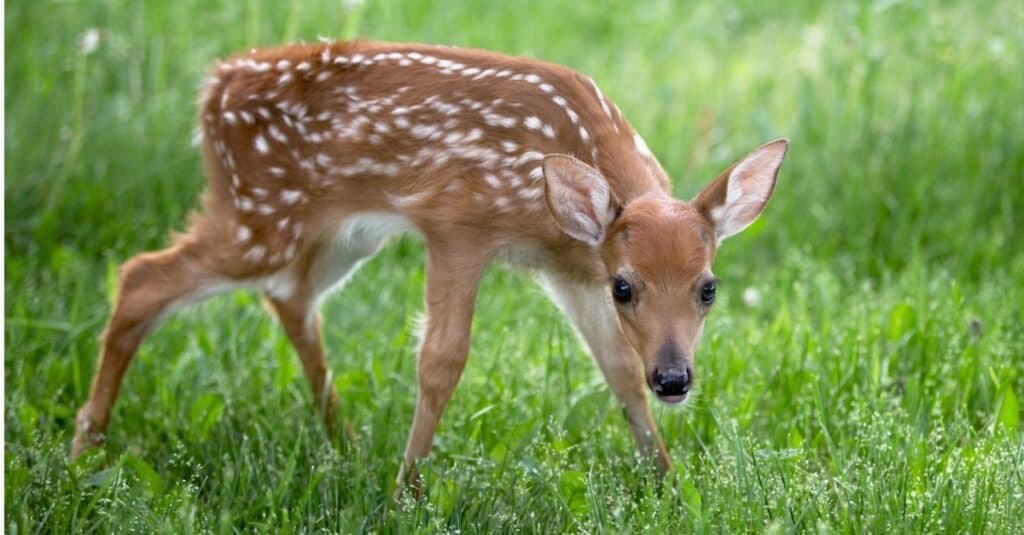
Native to the Americas are whitetail deer.
©iStock.com/Lynn_Bystrom
Whitetail deer are native to the Americas. They are found in all of North, Central, and even South America as far down as Peru. While they’re named after their strong presence in Virginia, they coexist with other subspecies in Canada, Mexico, and Central America.
Reindeer are a bit more complicated to situate. They are all over the northernmost parts of the world, in both North America and Eurasia. They dominate the landscape of northern Canada and Siberia and have a strong presence in the countries of Scandinavia. However, there’s a thing to keep in mind. They inhabit tundras and deep forests, preferring far colder climates than their Whitetail cousins.
The International Union for the Conservation of Nature has ruled that “reindeer” is the name of the European subspecies of Rangifer, while “caribou” applies to the North American subspecies. While the differences between reindeer and whitetail deer aren’t huge, this is an important taxonomical distinction.
Reindeer vs. Whitetail Deer: Fur
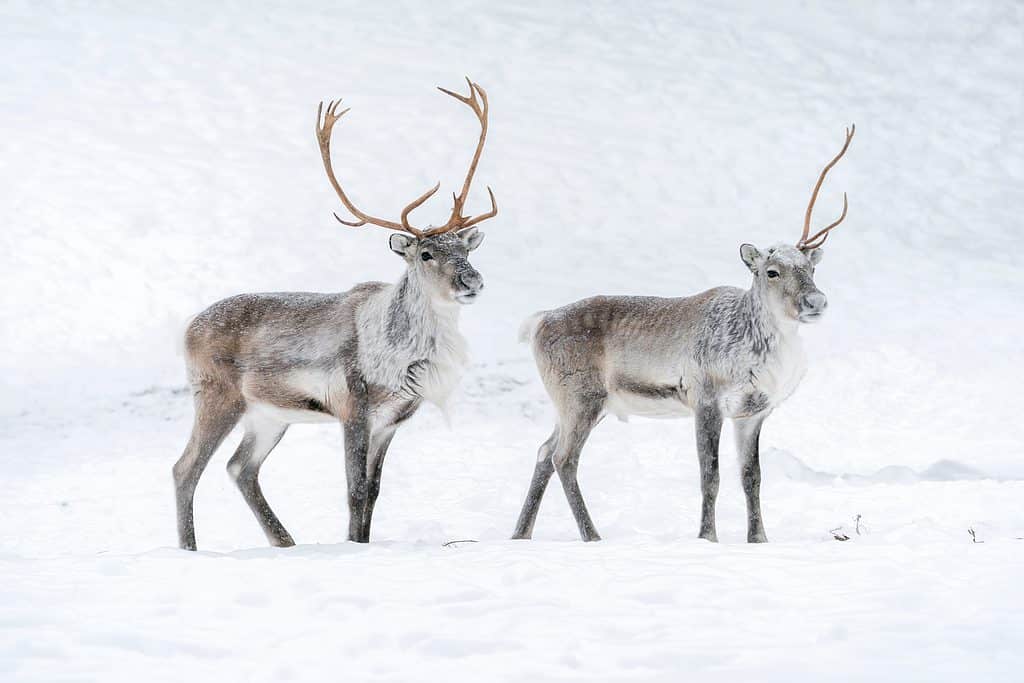
Reindeer are specifically built to endure harsh winter conditions and snow.
©Tam and Trace Photography/Shutterstock.com
When discussing these evolutionary adaptations, it’s necessary to keep in mind the habitats in which each species has developed.
Due to the habitat and conditions reindeer must endure, they have much denser and stronger fur, capable of withstanding up to 40 degrees below 0. Also, their color changes based on their habitat and the season — reindeer that live further north have lighter-colored fur.
Whitetail deer, on the other hand, have much lighter fur, as they haven’t evolved to withstand the freezing temperatures of the arctic hemisphere. Their color is significantly lighter and remains mostly constant throughout the year, although some seasonal changes have been observed in a small group of deer.
Reindeer vs. Whitetail Deer: Food
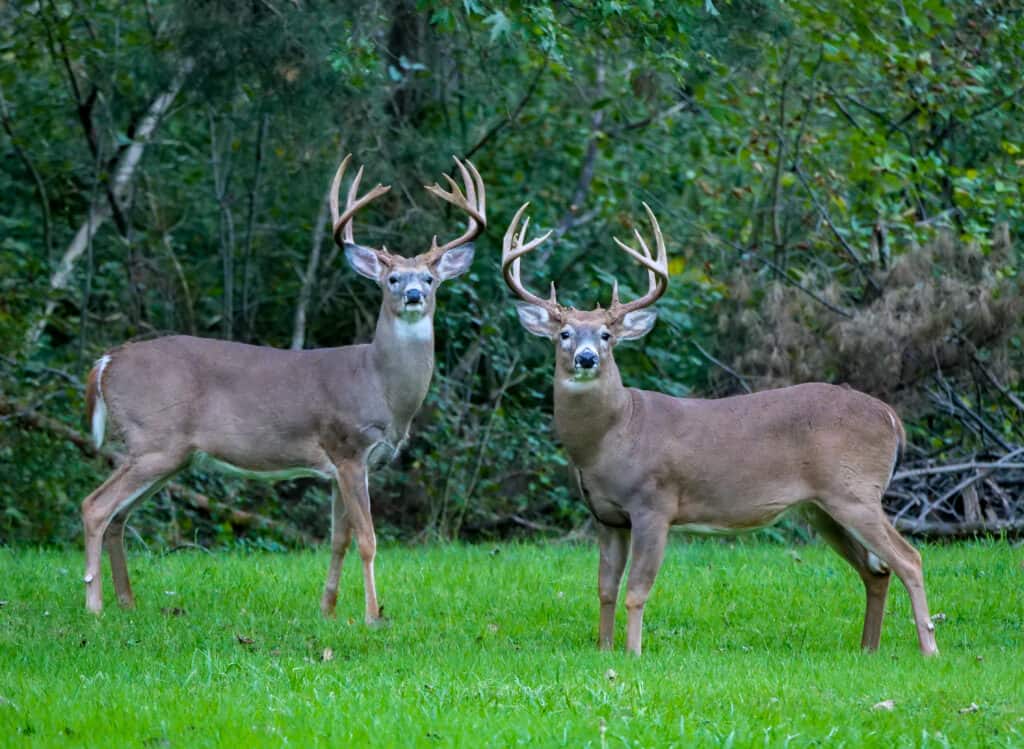
With unusually unspecialized digestive systems, deer are capable of feeding on pretty much anything. Whitetail deer generally prefer twigs and leaves, though.
©iStock.com/Ralph Navarro
Both animals have pretty similar, although not equal diets. They both feed on grass, mushrooms, and leaves, but reindeer have developed different adaptations. One of these is the presence of enzymes in their digestive system that allows them to convert lichen, or reindeer moss, directly into glucose.
While whitetail deer also eat lichen, they don’t have such an adaptation, and reindeer are far more efficient when it comes to digesting one of the only foods they have during winter. It’s worth noting that both of them, and all deer in general, have unusually unspecialized digestive systems. This allows them to feed on pretty much anything. Deer, for example, consume small twigs and leaves, while reindeer have been known to eat bird eggs and even fish when in need.
Reindeer vs. Whitetail Deer: Antlers
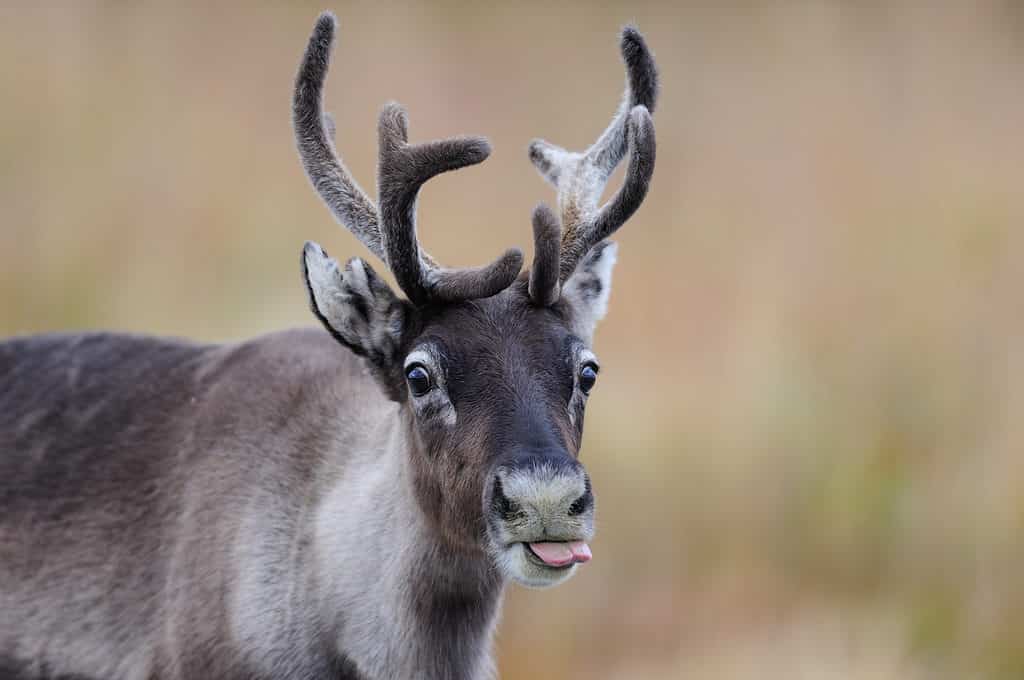
Female reindeer
have antlers
, and notably retain their antlers during the winter. Male reindeer, on the other hand, lose their antlers during winter and regrow them in spring. Female whitetail deer do not have antlers.
©MM.Wildlifephotos/Shutterstock.com
The obvious difference is in their size. Reindeer have much more prominent and denser antlers than deer. However, the critical difference is in sexual dimorphism. Female reindeer have antlers, while female whitetail deer don’t.
The average whitetail deer’s antlers weigh about 6 grams per kilogram of body mass. A reindeer’s antlers weigh about 30% more, rounding up to 8 grams per kilogram of body weight. They both use them for the same purpose of impressing females and battling over them.
They both shed them annually. Other than that, the only other notable thing is how reindeer will sometimes bury their antlers in snow: that’s why the natives in Canada called them “snow shovelers.”
Reindeer vs. Whitetail Deer: Hooves
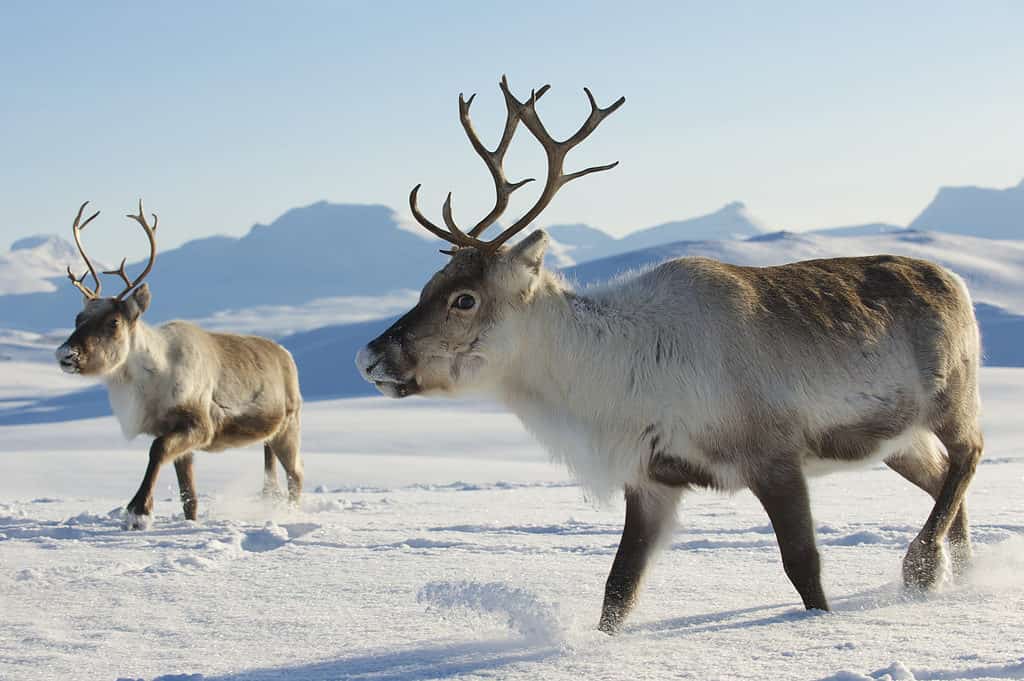
The hooves of reindeer change with the seasons.
©Dmitry Chulov/Shutterstock.com
Whitetail deer hooves and reindeer hooves are very similar but also different in some key ways. They are both pointy and with the ends slightly curved in.
However, as reindeer have adapted to the extreme cold and temperature changes when seasons change, so have their hooves. Caribou hooves change with the season, becoming more padded and softer in the summer for stepping on grass and twigs, while they become much harder during the winter. This adaptation allows them to better traverse their seasonal migrations without getting injured.
Reindeer vs. Whitetail Deer: Migration
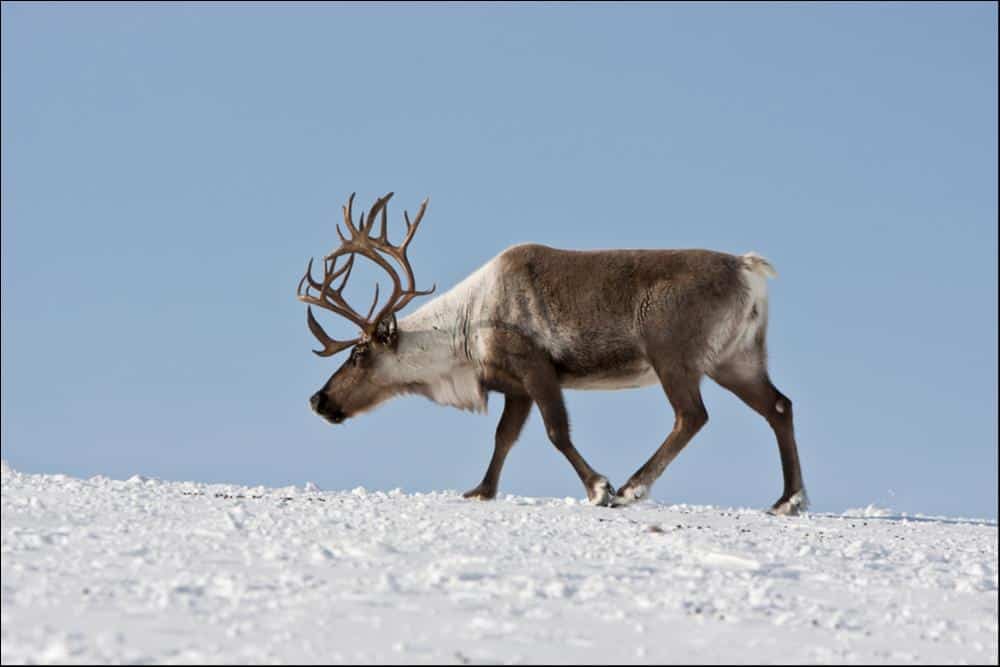
While whitetail deer have a small home range, species of caribou are the farthest migrating terrestrial animals in the world.
©iStock.com/Sergey_Krasnoshchokov
One of the most significant differences between them is that while whitetail deer are famously known for having a small home range of a few miles, reindeer are some of the animals that migrate the most. Some caribou species are literally the farthest migrating terrestrial animals in the world, covering up to 3000 miles yearly.
They do this mainly due to the change of the seasons. During winter, they go south and spend the cold days cuddled among thick boreal forests, and during summer, they graze the northern plains. They migrate in herds of hundreds of thousands of individual reindeer and are led by females.
European reindeer migrate much shorter distances, while their North American brothers are all over the place. They can cover up to 20 miles a day, even while being calves. Opposite to this, whitetail deer typically don’t migrate at all, instead remaining in an area about one square kilometer in size.
Up Next…
Thank you for reading! Have some feedback for us? Contact the AZ Animals editorial team.

